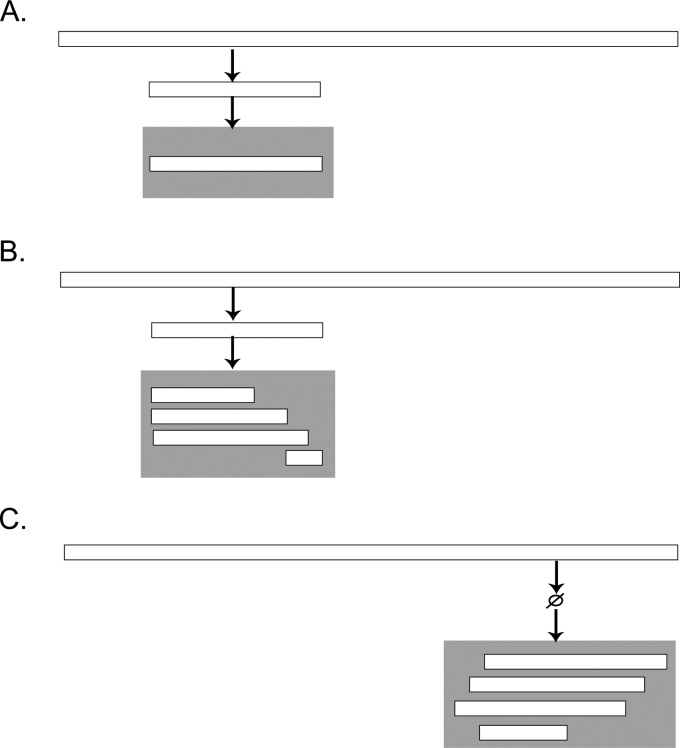Figure 1.
The possible scenarios that can be expected when comparing the peptides in intact human milk with the peptides found in the infant stomach. In each panel, the parent milk protein is represented by the top horizontal bar. The peptide in breast milk is represented by the smaller white bar, and the gray box represents when a peptide is in the stomach. In (A), the peptides present in intact human milk are found in the stomach and undergo no gastric digestion but can multiply in copy number, whereas in (B), peptides from milk are subject to further digestion in the stomach leading to smaller fragments. Finally, (C) represents peptides that are only achieved by digestion of gastric enzymes (i.e., they are not present in intact milk).

